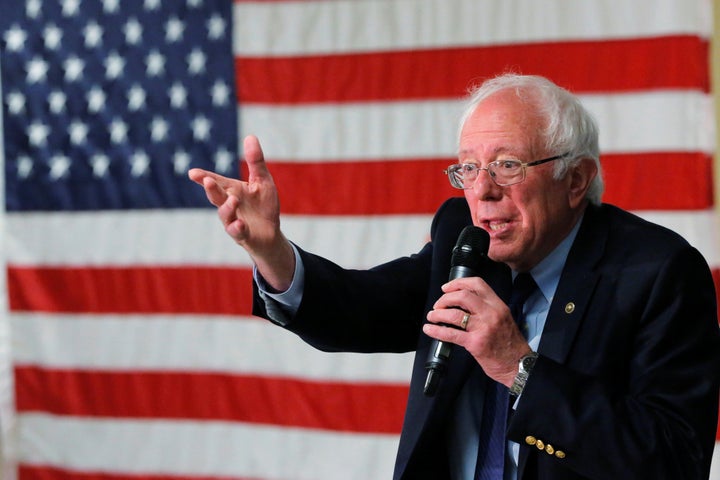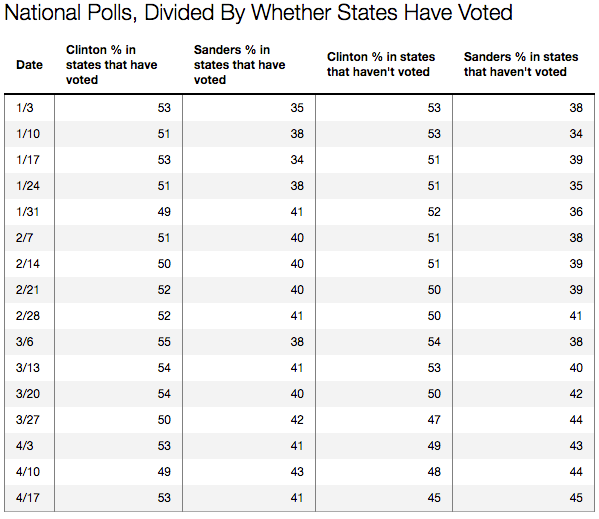
Sen Bernie Sanders (I-Vt.) is on the verge of catching up to Democratic presidential front-runner Hillary Clinton, if national polls of the primary are any gauge.
HuffPost Pollster’s average, which includes all publicly available surveys, shows Sanders trailing by about 4.3 points, down from a deficit of more than 20 points at the beginning of the year.
National primary polls, however, aren’t an especially good gauge for a number of reasons. For one, there’s no such thing as a national primary — states vote individually, and attempts to survey them all at once omit the significant differences between, say, the Iowa caucuses in February and the New Jersey primaries in June. For another, at this point in the calendar, many of the people included in national polls live in states that have already voted rather than those that still have upcoming contests.
National pollsters often don’t try to differentiate between those groups, viewing their results as a barometer of political attitudes rather than a tool for predicting who’s likely to win. But the NBC/SurveyMonkey tracking poll, which has been following the race since the beginning of the year, was able to look at the divide between the states that have already voted and those that have yet to do so.

Here are those numbers in graph form:
As the charts show, the two groups have generally tracked more or less closely through much of the year. But that seems to have changed in the last several weeks, with Clinton's edge in the remaining primary states bottoming out to a tie.
It's hard to know exactly what that shift across more than a dozen states means, or how significant it is.
The rest of the calendar doesn't look especially favorable for Sanders, offering relatively few of the caucus states where he's racked up big margins. Modeling predictions give Clinton the edge in most of next Tuesday's primary states.
Complicating matters for deciphering the data, the remaining states aren't represented equally. California's sheer size means that it represents about 29 percent of the yet-to-vote respondents. New York, which hadn't voted when the most recent set of surveys was conducted, makes up another significant chunk. And, while the NBC/SurveyMonkey poll has a larger-than-average sample size, it's just one survey and subject to fluctuations.
Still, the results could indicate Sanders is gaining significantly in some of the final states to vote, many of which have seen little or no state-level polling. His campaign has certainly made an advertising push, launching commercials in states including Connecticut, Indiana and California.
Regardless, even a notable uptick for Sanders may end up being too little, too late to overcome his current deficit in either pledged delegates or the popular vote. State-level polling, which remains the more reliable gauge, shows him trailing in Connecticut, Maryland, Pennsylvania, California and New Jersey, which he’d need to win by large margins to remain afloat.
This article has been updated with additional information on state-level polling.

